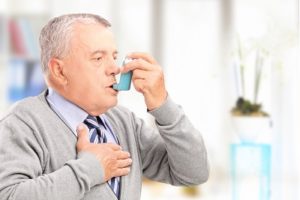
What Does An Asthma Attack Feel Like And What Happens During An Attack?
An “asthma attack” is also referred to as an “acute exacerbation” of asthma and is a sudden and rapid flare-up in asthma symptoms. During an acute exacerbation, there is a constriction and spasm of the muscles in the walls of the bronchial tubes which results in the narrowing of the bronchial tube which impedes the air flow to the lungs. In addition, there is inflammation of the lining of the bronchial tubes and an increase in the mucus secretion into the tubes.
The symptoms of an acute exacerbation of asthma may include a feeling of tightness or heaviness in the chest, wheezing, coughing, and/or difficulty in breathing. Some asthmatic individuals describe the feeling as if they are forced to breathe through a narrow straw. These episodes are usually also accompanied with considerable anxiety and apprehension.
Breathing may become shallow and rapid in severe cases. The increased work of breathing may be associated with sweating. The spaces between the collar bones, between the ribs, and below the chest bone (i.e., sternum) may become sunken or retracted. In extreme cases, the lips, fingers, and/or toes may turn blue due to an inadequate oxygen supply.
An exacerbation of asthma is a potentially life-threatening situation. It is therefore very important that an exacerbation of asthma is promptly and aggressively treated. It is estimated that between 3,000 and 3,500 people die every year in the United States due to severe asthma. The use of a fast-acting rescue bronchodilator medication (e.g., Albuterol, Proventil, Ventolin, ProAir, Xopenex) via an inhaler or nebulizer machine to open the bronchial tubes in conjunction with seeking urgent medical help is essential in cases of a severe asthma exacerbation.
In some cases, there are identifiable triggers for asthma attacks such as an exposure to a known allergen (e.g., dust mites, molds, pets, pollens, cockroaches), irritants (e.g., cold air, cigarette smoke, air pollution, strong odors, chemical exposures), and/or infections (e.g., especially viral infections). In these cases, avoidance of exposure to the known triggers is critical in helping to prevent acute asthma exacerbations.
